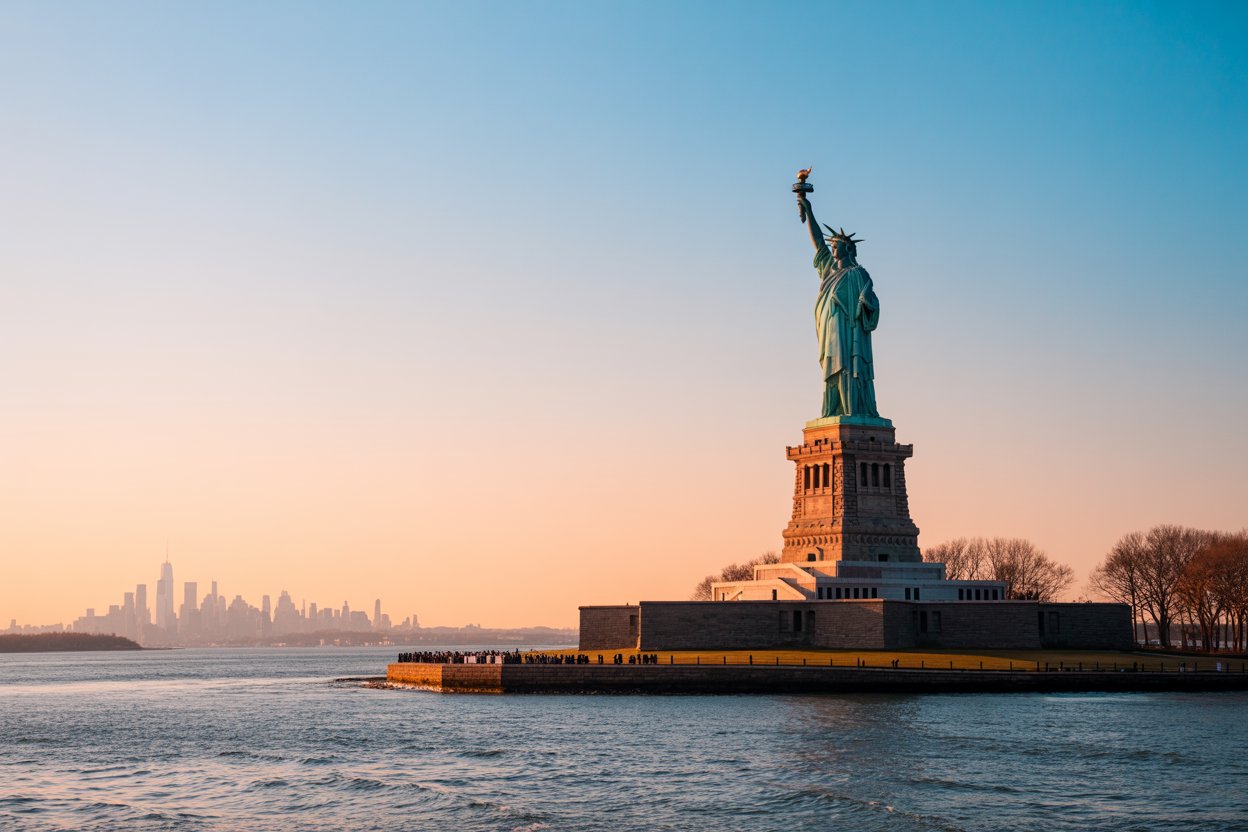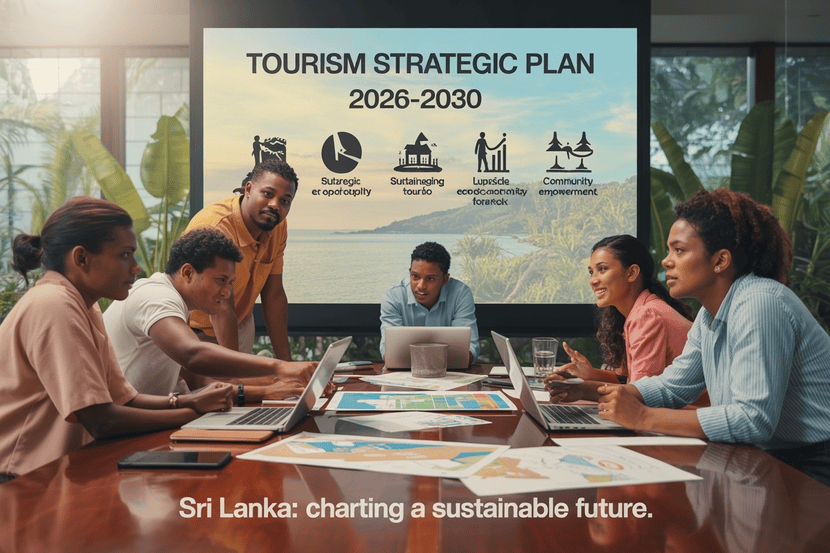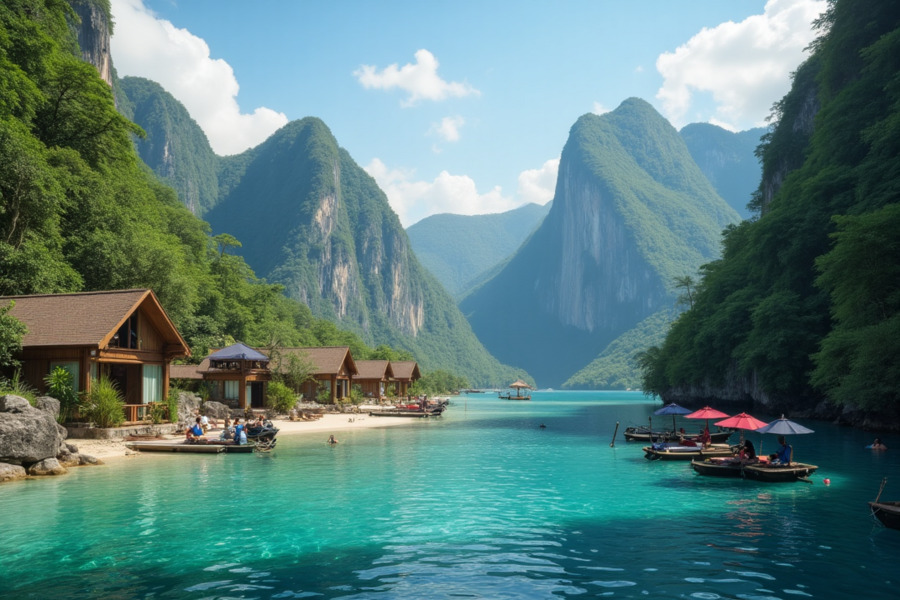≡-Nevada Joins Texas, New Hampshire, Colorado, Maine, Montana, and More as US Tourism Continues Its Freefall for Eight Months Straight and Is Projected to Decline Until the End of 2025 – Viral of Today
<> Viral of Today <>
Home » America Travel News » Nevada Joins Texas, New Hampshire, Colorado, Maine, Montana, and More as US Tourism Continues Its Freefall for Eight Months Straight and Is Projected to Decline Until the End of 2025 Published on
September 3, 2025By: Rana PratapNevada now joins Texas, New Hampshire, Colorado, Maine, Montana, and many others as US tourism continues its freefall for first eighth months and is expected to drop until at least the end of 2025. The country is watching Nevada for an alarming trend. Fewer and fewer tourists are spending nights in the state’s hotels and gaming in its casinos. Texas is equally affected. New Hampshire and Maine are also suffering extensive border losses to Canada. Colorado is still struggling in its mountain towns. Montana businesses adjacent to Glacier National Park are still buckling beneath lost spending.‘Since freefalling is an accepted term, the same could be said for US tourism. For the past 8 months, spending and arrivals have been on a freefall. Nevada, Texas, New Hampshire, Colorado, Maine, and Montana are not the only ones. The entire country is experiencing a plummeting demand of travel. Analysts assumptions on projections are freefalling the country’s travel estimations to 2025, thus making the slump one of the most devastating periods in US travel history.’The figures presented show gaping holes in vacation revenue across states. Nevada alone is missing millions in tourism revenue. Texas is grappling with a dip in travel activity after a brief moderate upsurge. The absence of Canadian motorists is forcing New Hampshire and Maine to make do with far less. European and Canadian patrons appear to have vanished from Colorado resorts. Canadian outflow to Montana results in a severe dip in domestic revenue. The losses from abroad have compounded the domestic recession and have led to a chronic fall in tourism activity across the US that commenced months ago. It is poised only to worsen through the end of 2025, potentially leaving large gaps in revenue across several states.A National Tourism SlumpThe start of 2025 marked the United States with the expectation of continuing expansion in travel. Unfortunately, these expectations have swiftly turned into warnings of disaster. In the first five months of the year, international arrivals to the United States decreased by 2.4% compared to 2024. The fact that arrivals by April were projected to fall by only 1.1% indicates how now, the speed at which that decline is accelerating is much greater. As of June, arrivals remained 6.2% lower, building on the 7.0% and 8.0% descents observed in May and March, respectively.Now, international organizations are beginning to express concern. In 2025, the World Travel and Tourism Council projects the US to be the lone out of 184 nations wherein spending from international visitors will decrease. The $12 billion decline, which is from $181 billion allocated in 2024 to the projected $169 billion in spending this year, is deemed to be conservative by numerous other analysts, with figures close to $29 billion floating around.Tourism Economics, on the other hand, has also changed their expectations. The firm initially estimated that in 2025, international visitors would increase by 8.8% compared to the year before. More recently, that figure has been changed to an 8.2% decrease. The difference of almost 18 percentage points in these two estimates indicates the speed at which the industry has moved from recovery to freefall.Canada and Europe Pull BackMost troubling declines come from America’s closest and most valuable markets. Canada. In 2024, over 20 million Canadians crossed the border and spent a total of $20.5 billion. But for 2025, this essential flow has slowed drastically. In May, Canadian arrivals were reported to be 16.8% down. In June, road arrivals were down 33% and air arrivals were down 22%.Western Europe has also stalled. Arrivals from the region have declined 2.3%. For Colorado, a favorite Eastern-stop of many Europeans, during this summer, while total European visits have declined by 39% over the summer.More interesting, however, are the mixed results. In Mexico, there has been an increase of 13.9% and Argentina, 24.6%. In dire contrast, South Korea declines by 11.3 and China, still heavily impacted by the 2019 pandemic, is 53% below that threshold. Most troubling of all is India. After decades of uninterrupted expansion, India reported a shocking 8% tumble in June followed by a further 5.5% in July.Nevada Tourism Decline on the StripNevada, and above all Las Vegas, is a prime example of the US tourism apocalypse. In 2025, a visitor defection that lasted for eight months stunned the industry, with a retreat so profound that no month could be labelled a recovery. By June, relative to 2024, the entire visitation number was 11.3% lower and Las Vegas, for the first time recorded, a decline of 2 million visitors, 8% lower than 2024 figures and recorded for the month of July.The hotel occupancy rates fell from 85.2% to 78.7% and average daily rates fell by 7% while June of 2025 recorded a staggering 14% collapse of revenue per available room which is the steepest fall ever recorded in a decade. Hospitality workers were fewer in number and had to remain content with lower payments, a trend that forced even the most stubborn to take second jobs.The last eight months have perhaps been the most unsettling in the history of the Strip. Families, conventioneers, and even headliners have all ceased to exist, economics lessons of the 70’s flashing across social media while casinos and gaming lodgings record a surge of profits. If the mass market tourism continues to decline while high spending guests remain, Nevada will be forced to remodel its entire tourism offer insinuating that the the guests will be fewer but the sum in their pockets will be large – a strategy devoid of rational thinking.Colorado Tourism Slowdown in the MountainsInternational tourists have all but disappeared from Colorado’s mountain towns over the last eight months, bringing observable economic contraction in their wake. Aspen and Breckenridge, for instance, saw tourist volumes relative to the rest of the summer drop by over 40% alongside 58% declines in Canadian visitors.Even more alarming, the tightening grip of the short-term rental market has mirrored the general weak economic environment, leading to a staggering 10% drop in occupancy rates. Contributions from small to midsize businesses, which include mountain guides and restaurants, have also shown a declining trend in the past eight months, alongside a slowdown in booking activity. Such income shocks, even in the off season, pose a threat to Colorado’s fiscal health by narrowing the tax base that funds education, recreational facilities, and infrastructure in the state.The extended period of economic weakness has directly hindered sales, leading to unsold stock, which in turn has hindered businesses from replacing their seasonal employees. Weakness in the fundamentals of the state’s economy has real consequences: the state’s reputation risks severe damage if loyal visitants realize how easy and cheap it is to vacation somewhere else.New York Faces Falling International ArrivalsEach month in 2025, New York, the busiest entry point in the US, has been losing foreign visitors. 2025 has the city expected to be down 17% in arrivals by year end, close to 2 million total tourists, and a spend of over 4 billion dollars.Broadway ticket sales softness, Fifth Avenue retailers mark fewer purchases, and US travel operators report smaller groups visiting Times Square and the Statue of Liberty. In a city deeply dependent on international tourists, diminished international visitation every month risks shedding every remaining inch of the city’s brand equity as a global tourism destination.From the Midtown hotel strip to Queens cafes, the eight-month slump dramatically alters neighborhood economies. Embassies and corporate travel organizers report continuous declines in visitor numbers. New York is closing in on a gap between global perception and ground reality, with most dependent communities stranded.Maine Struggles with Canadian Visitor LossesFor six straight months leading into the summer, and continuing into its eighth month by August, Maine has suffered a steep fall in Canadian border crossings. July alone saw a 28% decline. Operators across the state call 2025 a “strange year,” but the reality is clearer — tourism has been shrinking consistently month after month.Border towns that once relied on regular weekend visitors from Canada now see far quieter streets, and local businesses are struggling with thin sales. After eight months of decline, the fear is that the damage could become long-lasting, breaking a cross-border pattern that supported Maine’s economy for decades.With eight consecutive months of weakening flows, even long-standing businesses like family-owned diners, gas stations, and small lodges are reporting sharp revenue losses. The once-reliable rhythm of Canadian weekend trips has disappeared, leaving Maine vulnerable to one of its deepest tourism crises in decades.New Hampshire Records Sharp Tourism DropNew Hampshire has also endured eight months of tourism weakness, almost entirely driven by disappearing Canadian travellers. Official figures show a 30% drop in room sales, retail receipts, and attraction visits. This is not a one-off bad month; it is a steady pattern that has stretched across most of 2025.Each month of decline has deepened the pressure on local shops, fairs, and lodges, many of which operate on slim margins. With Canadian road trips vanishing for eight months straight, the state faces one of its most severe tourism contractions in memory.This prolonged slide has left tourism boards scrambling to attract domestic visitors to fill the gap, but even targeted campaigns have failed to offset eight months of consistent Canadian losses. For communities where cross-border traffic once made up a lifeline, the absence has been deeply destabilising.Montana Sees Spending Collapse Near the ParksMontana, home to Glacier National Park, has seen Canadian spending fall by 37% each month in Kalispell, while hotels in Whitefish have reported a 25% drop in business. Border crossings at Roosville were down 25% in spring, and the decline has persisted for eight months in a row.In 2024, Montana hosted a record 13.8 million visitors. But in 2025, that momentum has reversed into a drawn-out slump. Eight months of shrinking traffic have left once-busy mountain towns unusually quiet, raising fears of a lost season and long-term damage to the region’s tourism economy.After eight months of steady decline, tour operators, fishing guides, and outfitters are reporting cancelled bookings and reduced group sizes. For many rural towns, tourism revenue is the backbone of survival, and a continued slump into 2026 could push fragile local economies into permanent decline.Texas Tourism Slips After Temporary SurgeTexas stands out as a different case, but it too shows how fragile the sector has become. In 2024, the state enjoyed record-breaking numbers, with 62 million travellers and nearly $98 billion in spending. But by 2025, the story had changed. Houston’s tourism sector collapsed by 20% after an artificial surge of hurricane evacuees in 2024 disappeared. Over the last eight months, demand has failed to recover, leaving hotels and attractions struggling with empty rooms and fewer bookings. The state’s experience is a reminder of how one-off boosts cannot hide the reality of a national downturn that is now entrenched.For eight months in a row, operators across Houston and beyond have reported softer hotel occupancy, fewer international arrivals, and declining restaurant receipts. The prolonged slump is especially tough for small and mid-sized businesses that built up staff and stock in anticipation of continued growth. Instead, they are now left with rising costs and thinning revenues, a double blow that underlines how fragile tourism has become in the state.Other US States also Feeling the BurnNew York has downgraded its tourism forecast for 2025, cutting projected visitors from 67.2 million to 64.1 million. The steepest drop is among international arrivals, which are now expected to fall by two million compared to earlier projections. This represents a loss of more than $4 billion in spending for the city’s economy. While hotels are still enjoying strong domestic demand with occupancy rates above 88% in June, the shortfall of overseas visitors is weighing heavily on Broadway, flagship retailers, and attractions.California is heading toward its first overall decline in visitation since the pandemic. International visits are projected to fall 9.2% in 2025, with Canadian arrivals alone down more than 32% year-on-year in July. While domestic travel remains strong at 252.5 million projected visits, the international losses are expected to drag total growth into negative territory. Hotels are also feeling the pressure, with occupancy forecast to decline 1.5% across the state, despite strong convention bookings in San Francisco.Florida continues to prove resilient despite deep losses from Canada. The state welcomed 75.4 million visitors in the first half of 2025, nearly matching the record pace of 2024. Overseas arrivals increased by 5.2%, helping offset an 18% decline in Canadian travellers. Hotel performance remains strong, with Miami’s RevPAR rising nearly 20% in April and Orlando occupancy climbing more than 6% during holiday weeks. Florida’s ability to attract diverse markets has kept it ahead of the national downturn.Hawaii shows stability but is still feeling shifts in its international mix. Visitor arrivals in June were down 1.8% compared to the previous year, while July continued the downward trend. Air seat capacity has dropped 8% overall, led by a 10% cut from Japan, historically a vital market. Hotels are performing well, with statewide occupancy above 77% and Oahu posting a strong 83.5% in July. By contrast, vacation rentals are struggling with occupancy below 50%.Illinois stands out with growth driven by Chicago’s travel hub. O’Hare International Airport had its busiest June in history, handling over 8 million passengers. The city also hosted IPW 2025, the nation’s largest inbound travel trade show, which is projected to generate hundreds of millions of dollars in future international business. This convention strength has helped Illinois remain one of the few states to see stable, if not improving, tourism outcomes in 2025, even as other states falter.Industry Leaders Sound the Alarm on U.S. Tourism DeclineTourism associations and industry leaders are openly warning about the deepening crisis in U.S. tourism. They agree that the slump, now in its eighth month, will not end quickly and is likely to stretch until the close of 2025. Their comments underline both the seriousness of the situation and the risks for jobs, businesses, and the wider economy.Key Tourism Associations and Research FirmsWorld Travel & Tourism Council (WTTC):The WTTC has strongly criticised the direction of U.S. tourism. It projected that America would be the only country out of 184 studied where foreign visitor spending would fall this year. The council forecast a sharp $12.5 billion drop in international spending for 2025. Julia Simpson, president and CEO of WTTC, warned that the U.S. is “heading in the wrong direction.” She stressed that while other nations are “rolling out the welcome mat,” America is “putting up the ‘closed’ sign.”Tourism Economics:Tourism Economics reversed its forecasts after tracking worsening sentiment. It first predicted an 8.8% rise in foreign arrivals for 2025 but later cut its outlook to an 8.2% fall. The firm explained that a heavy “sentiment drag” began in February and will continue to weigh on the sector. Aran Ryan, its director of industry studies, described the trend as a “sustained setback.” He added that the effects could linger for years, with a full recovery possibly delayed until 2029.U.S. Travel Association:The U.S. Travel Association has warned that policies such as higher visa fees are directly damaging demand. In April 2025, its president testified before Congress and admitted that the U.S. no longer holds the top spot in global tourism. The group highlighted the economic impact, pointing out that a 10% fall in Canadian tourism alone threatens 14,000 American jobs.Voices from the IndustryTed Pappageorge:Ted Pappageorge, who leads Nevada’s Culinary Workers Union Local 226, called the slump the “Trump slump.” He said that many Latino visitors from Southern California are avoiding Las Vegas because they fear immigration crackdowns, and this absence is hurting the state’s hospitality workforce.Amanda Hite:Amanda Hite, president of hotel analytics firm STR, linked the weaker hotel demand to uncertainty, inflation, tougher competition, and shifting travel habits. She said these combined pressures are cutting occupancy levels and forcing operators to rethink their strategies.Political and Policy BarriersMany of these declines are tied to politics and policy. The “Trump Slump”, as industry experts call it, combines rhetoric with restrictive rules.From October 2025, a new $250 “visa integrity fee” will apply to travellers from countries outside the visa waiver programme. That means visitors from Mexico, Brazil, India, and China now face total visa costs of $442, among the highest in the world.From September 2025, most applicants must attend in-person interviews at consulates, even for renewals. This creates long waits and extra costs. In June 2025, a new travel ban also blocked entry from 19 countries, with the possibility of expansion to 36 more.These measures add financial, time, and emotional burdens. For a family of four from a non-waiver country, the visa process could now add more than $1,000 and several days of hassle. Competing destinations in Europe or Asia look far more attractive.Economic Ripples Across CommunitiesTourism is not just about holidays. It drives jobs, small businesses, and tax revenues. A 10% fall in Canadian visits alone could cost 14,000 US jobs.In Las Vegas, workers are already seeing reduced incomes. In mountain towns, local restaurants and shops face weak sales. In places like Fort Worth, visitor spending normally generates $251 million in taxes each year. Without it, residents could face $750 more in property taxes to maintain public services.These ripple effects show why the slump is more than a travel story. It is an economic and social crisis for communities.The Business Travel ExceptionThe only bright spot is international business travel. In early 2025, the US was the world’s top destination for corporate travellers. Global business trips grew 6% in 2024 and continued into 2025.This explains why some hotels and airlines with strong business demand remain stable. But leisure-focused attractions, restaurants, and shops are struggling. Business travel cannot fully replace leisure travel, because leisure tourists stay longer and spend more per day.Domestic Travel Remains StrongWithin the US, domestic travel is holding up. Surveys show 92% of Americans plan to travel in 2025, with 56% planning to travel more than in 2024. Domestic spending is expected to grow 3.9% to reach $1.35 trillion.This helps soften the blow in some areas, especially drive-to markets. But domestic visitors do not always spend at the same level as international tourists, leaving a gap that local economies feel.Outlook for 2025 and BeyondExperts warn that the slump will not end soon. Because travel decisions are made months in advance, the weak bookings in early 2025 will affect arrivals for the rest of the year.Some analysts believe international leisure tourism may not return to 2024 levels until as late as 2029. Business travel may hold for now, but risks remain if trade disputes or recessions hit.The current crisis is more than a cycle. It reflects a shift in sentiment and policy that is pushing travellers towards other destinations.Nevada joins Texas, New Hampshire, Colorado, Maine, Montana, and more as US tourism continues its freefall for eight months straight and is projected to decline until the end of 2025 because the strong dollar and rising trip costs, stricter visa rules and interviews, and negative politics are pushing tourist toward cheaper, more welcoming destinations.ConclusionThe story of US tourism in 2025 is one of lost opportunities and painful lessons. Nevada, Texas, New Hampshire, Colorado, Maine, and Montana are at the centre of a national freefall that has lasted eight months and is set to continue.The figures show billions in lost spending, thousands of threatened jobs, and communities under strain. The causes are clear: higher costs, political barriers, and negative perceptions of America as a destination.Unless policies change and trust is rebuilt, the US risks losing its global tourism leadership for years to come.
This information will surprise you!
See also
- Read until the end to discover everything.
- Important information you need to know.
- Interesting facts and helpful tips.
Conclusion
Did you enjoy the news? Keep following us daily!













